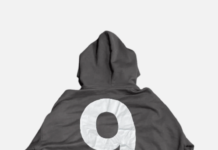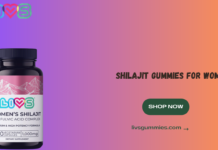Hijama, popularly known as cupping therapy, has gained significant attention in recent years, especially in regions like Dubai. This traditional practice involves creating suction on the skin using cups, and it has been a staple in various cultures for centuries. With a growing interest in holistic treatments, many people are turning to Hijama in Dubai for its proposed benefits in health and wellness. This blog explores the history, mechanisms, benefits, and considerations of Hijama.
The Historical Roots of Hijama
Hijama has ancient origins, tracing back thousands of years to Chinese, Egyptian, and Middle Eastern civilizations. Initially used as a remedy for various ailments, it has evolved into a mainstream therapeutic option. Understanding its history provides a context for its relevance and application in contemporary settings.
Key Historical Insights:
- Cultural Significance: Hijama is mentioned in historical texts, notably in Islamic medicine, emphasizing its importance in health practices.
- Popularity Across Cultures: The method was utilized by ancient Greeks and Romans, showcasing its extensive cross-cultural acceptance.
- Modern Adaptations: While the fundamental principles remain the same, modern practices have incorporated improved techniques and materials.
How Hijama Works
The mechanics of Hijama primarily involve the application of cups to the skin, creating a suction effect. This suction pulls the tissues upwards, enhancing blood flow and stimulating a healing response in the body.
Understanding the Process:
- Suction Mechanism: The cups create a vacuum that can draw gases and moisture from the skin, contributing to the therapeutic effects.
- Types of Cups: Various materials, including glass, silicone, and bamboo, are used, each with unique properties.
- Treatment Techniques: Hijama can be classified into dry and wet cupping, with the latter involving small incisions to extract stagnant blood.
Health Benefits of Hijama
The appeal of Hijama lies in its purported health benefits. While scientific evidence is still evolving, practitioners and patients have shared numerous potential advantages.
Commonly Reported Benefits:
- Pain Relief: Many individuals seek Hijama for relief from chronic pain conditions such as back pain, migraines, or arthritis.
- Detoxification: The therapy is often associated with detoxifying the body by removing impurities and stagnant blood.
- Improved Circulation: Enhanced blood flow is frequently noted, which may aid in faster recovery from injuries.
- Stress Reduction: The relaxing nature of the treatment can help reduce stress and promote emotional well-being.
- Enhanced Immune Function: Some studies suggest that Hijama may help bolster the immune system, promoting overall health.
The Procedure: What to Expect
Understanding the Hijama process can help ease any anxieties about undergoing this treatment. Each session generally follows a standard procedure, ensuring safety and efficacy.
Session Overview:
- Initial Consultation: Prior to treatment, a thorough consultation is conducted to assess individual needs and health conditions.
- Preparation: The session begins by preparing the areas to be treated, ensuring hygiene and readiness.
- Cup Application: Cups are positioned on the skin, and suction is applied, which might be felt as a tight sensation.
- Duration: Each session may last from 30 to 60 minutes, depending on the individual plan.
- Post-Treatment Care: After the procedure, specific aftercare instructions are provided to enhance recovery and maintain benefits.
Considerations Before Trying Hijama
Before embarking on a Hijama journey, there are several factors to consider, ensuring that the treatment aligns with personal health goals and needs.
Important Considerations:
- Health Status: Individuals with specific health conditions should consult healthcare providers to ensure Hijama is suitable for them.
- Qualified Practitioners: Seek certified and reputable practitioners to ensure safety and proper technique.
- Expect realistic outcomes: It is crucial to enter with realistic expectations regarding the benefits and the number of sessions required.
Exploring More Benefits of Hijama
While we’ve discussed primary benefits, additional advantages stem from leveraging Hijama as part of a holistic wellness approach. Many people incorporate Hijama into broader health strategies.
Additional Health Perspectives:
- Mental Well-being: The calming effects of Hijama can promote mental clarity and emotional stability.
- Skin Health: Some claim that Hijama can improve skin conditions, aiding in conditions like acne or eczema.
- Alternative to Conventional Treatments: As a complementary therapy, many explore Hijama as an adjunct to traditional medicine, especially for chronic conditions.
Cultural Perspectives on Hijama
In Dubai and surrounding areas, Hijama holds a cultural significance beyond mere health benefits. It reflects a rich heritage of traditional healing arts that contributes to community wellness.
Cultural Insights:
- Social Practice: In many cultures, Hijama sessions occur in groups, promoting social bonding and community support.
- Spiritual Aspects: For some, Hijama is believed to facilitate spiritual cleansing and growth, intertwining physical and spiritual health.
- Integration with Modern Health: The practice is being increasingly embraced in conjunction with modern health approaches, creating a unique blend of old and new healing practices.
Finding the Right Practitioner
With the rising popularity of Hijama, it’s crucial to find a qualified practitioner to ensure a safe and effective experience. Proper research and considerations can lead to better outcomes.
Tips for Selecting Practitioners:
- Credentials and Experience: Look for practitioners with recognized qualifications and extensive hands-on experience in Hijama.
- Referrals and Recommendations: Seek referrals from trusted sources or community members who have previously undergone treatment.
- Facility Standards: Ensure the treatment facility adheres to strict hygiene and safety protocols.
FAQs
Q1: What should I wear to a Hijama session?
A1: It is advisable to wear comfortable clothing that allows easy access to the areas being treated, such as loose-fitting shirts or pants.
Q2: How many sessions of Hijama are typically recommended?
A2: The number of sessions varies depending on individual health needs and conditions. Some may benefit from a single session, while others may require multiple treatments over time.
Q3: Can Hijama be performed on any part of the body?
A3: Hijama can be applied to various areas, including the back, neck, and limbs. However, the practitioner will determine the most beneficial locations based on individual assessments.
Q4: Is Hijama suitable for everyone?
A4: While many people can benefit from Hijama, it’s essential for individuals with specific health conditions to consult their healthcare provider before undergoing treatment to ensure its appropriateness for their situation.
Conclusion
While Hijama has deep historical roots, its future in places like Dubai looks promising. The integration of traditional practices with modern wellness philosophies is paving the way for renewed interest.As more individuals seek natural healing modalities, Hijama stands out as an option worth exploring for its range of health benefits. Embracing this ancient art may not only contribute to physical well-being but also enrich mental and emotional health, making it a multifaceted option in the journey toward holistic wellness.
































